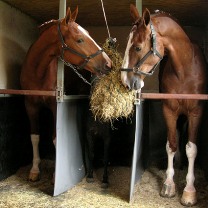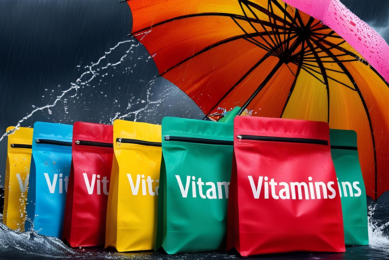Bad hay affects horse health in Missouri

Due to a bad hay crop, University of Missouri-Columbia veterinarians are reporting an increased number of horses with chronic selenosis and vitamin E deficiency, problems that can be fatal.
“Last year’s drought meant that Missouri’s hay crop, which is usually
balanced very well for a horse’s nutrition, was much poorer than usual,” said
Philip Johnson, professor of veterinary medicine and surgery. “Because of the
poor Missouri hay crop, horse owners imported hay from other states nearby and
possibly fed their horses hay that was too high in selenium. This can have very
grave consequences for horses. Owners also may have fed their horses poor
quality hay from Missouri or other places, which led to deficiencies in vitamin
E, another very dangerous problem for horses.”
Selenium
poisoning
Selenium is a naturally occurring element and is an
essential part of horse diets. However, too much or too little can create
problems for a horse. When chronic selenosis, or selenium poisoning, occurs from
eating too much of the element, horses can lose the hair in the mane and tail
and develop a form of laminitis, a painful condition that affects the hoof. If
left untreated for too long, a horse with chronic selenosis may require
euthanasia as a result of severe laminitis.
Johnson said that the amount
of selenium in hay can vary by county throughout the nation, but that Missouri
hay typically has just the right amount of the essential element. For a small
fee, horse owners can have their hay tested to determine if it has the right
amount of selenium in it.
Vitamin E deficiency
In
addition, hay that is not fresh can lack vitamin E, an antioxidant which is
important for nerve health in a horse. Some horse owners unknowingly compensate
for this deficiency by feeding their animals with nutritional supplements. Those
horses that suffer from a vitamin E deficiency typically show symptoms that
include weakness, loss of weight, trembling and changes in the retina at the
back of the eyeball. A quick blood test can determine if the animal is suffering
from a vitamin E deficiency. Johnson recommends that horse owners who imported
hay from unknown sources last year either have the hay tested or keep a close
watch on their horses. Horses that do not have access to green grass and that
are being fed old yellow hay are at risk.
“Usually, by the time the
horse is showing symptoms of either problem, it may be too late to reverse the
disease completely,” Johnson said. “However, if a horse owner has other horses
that are feeding from the same food source, it’s important to have those animals
treated before the damage is permanent.”











